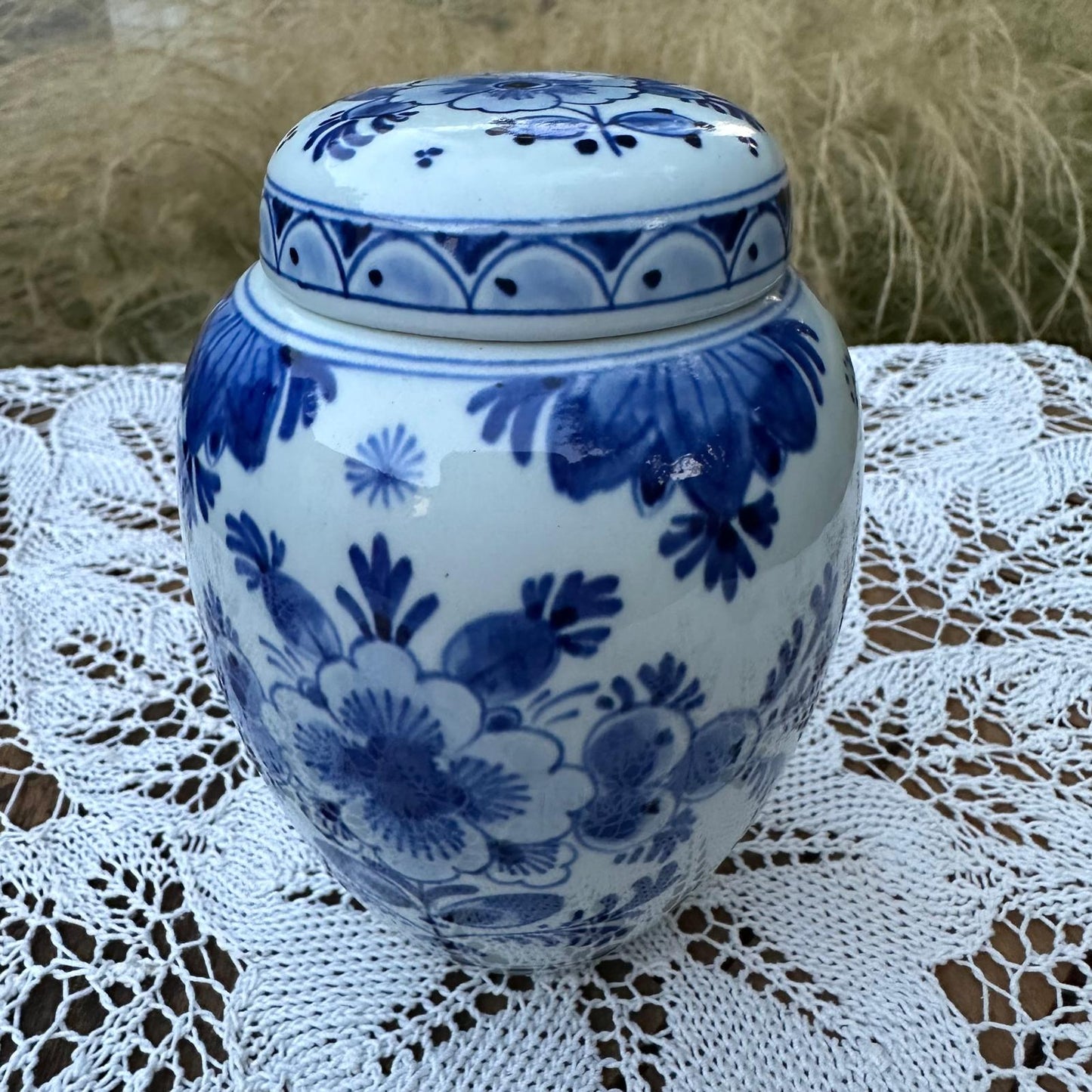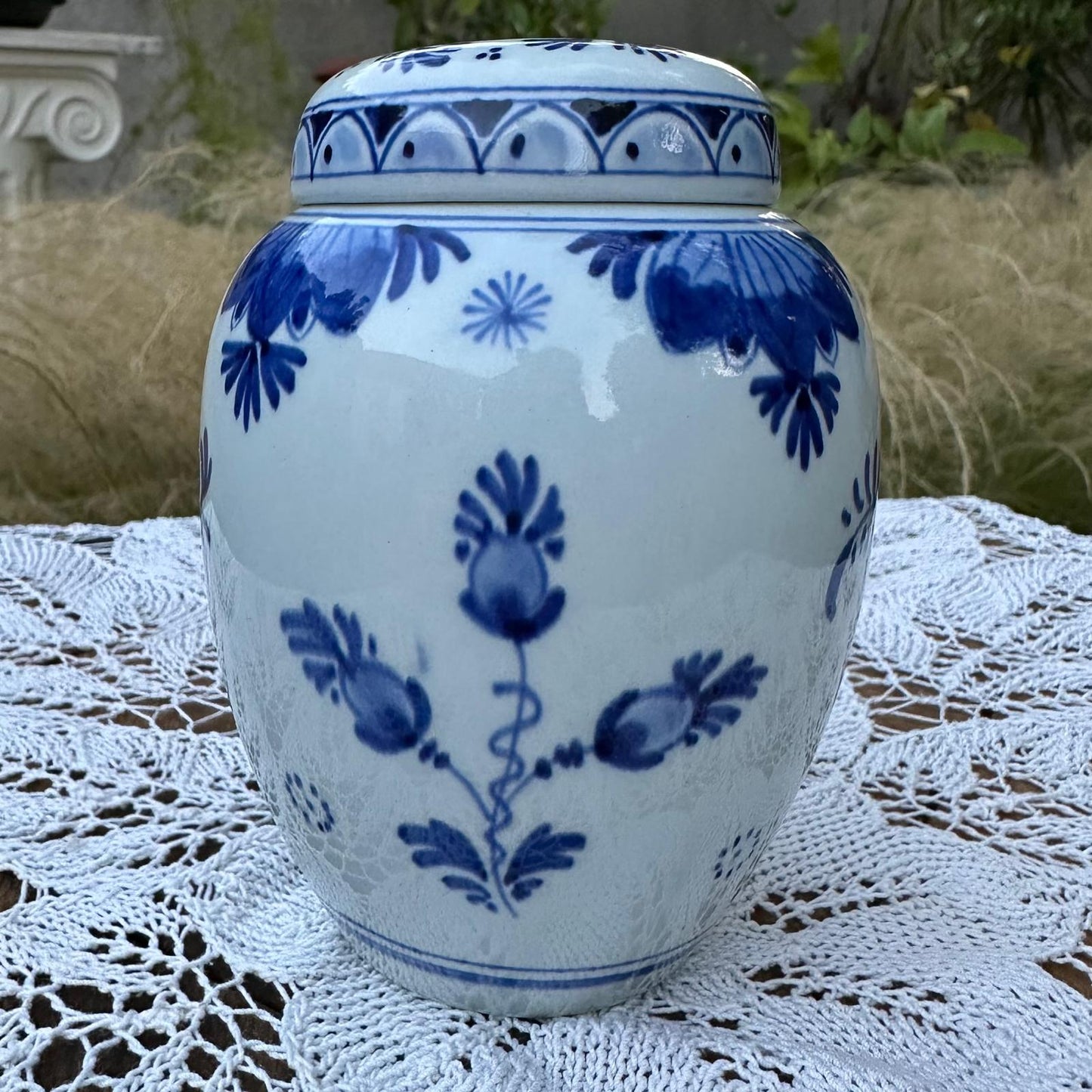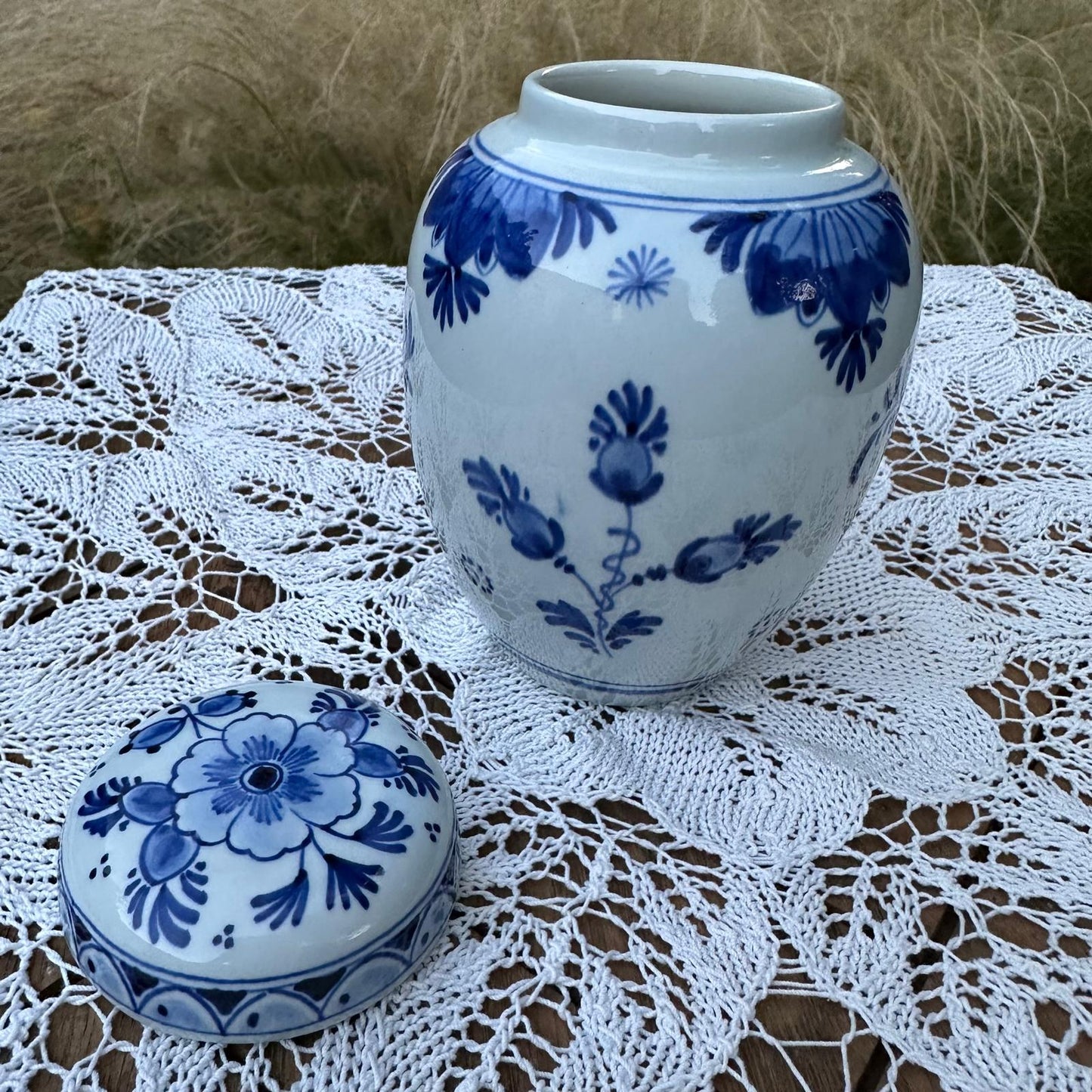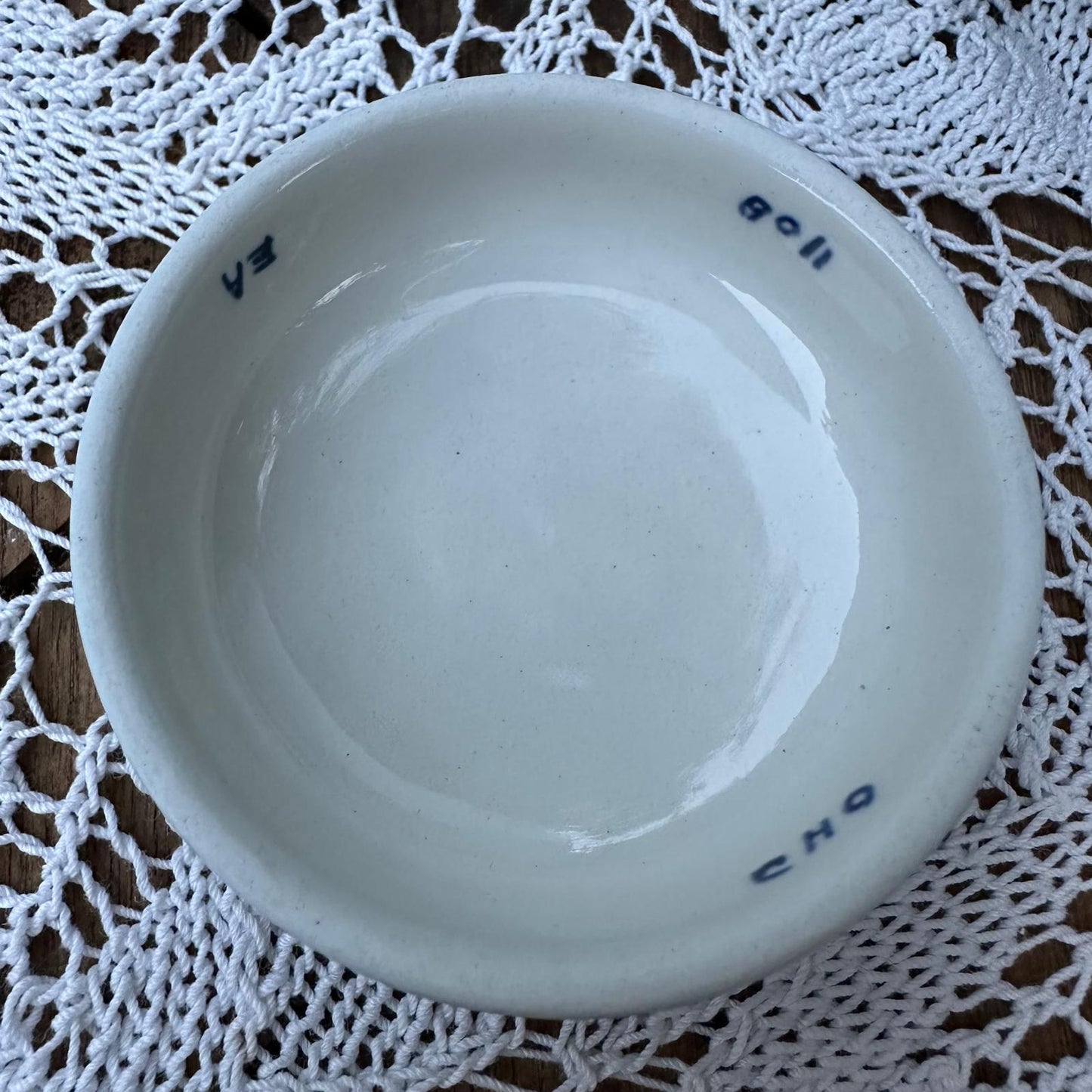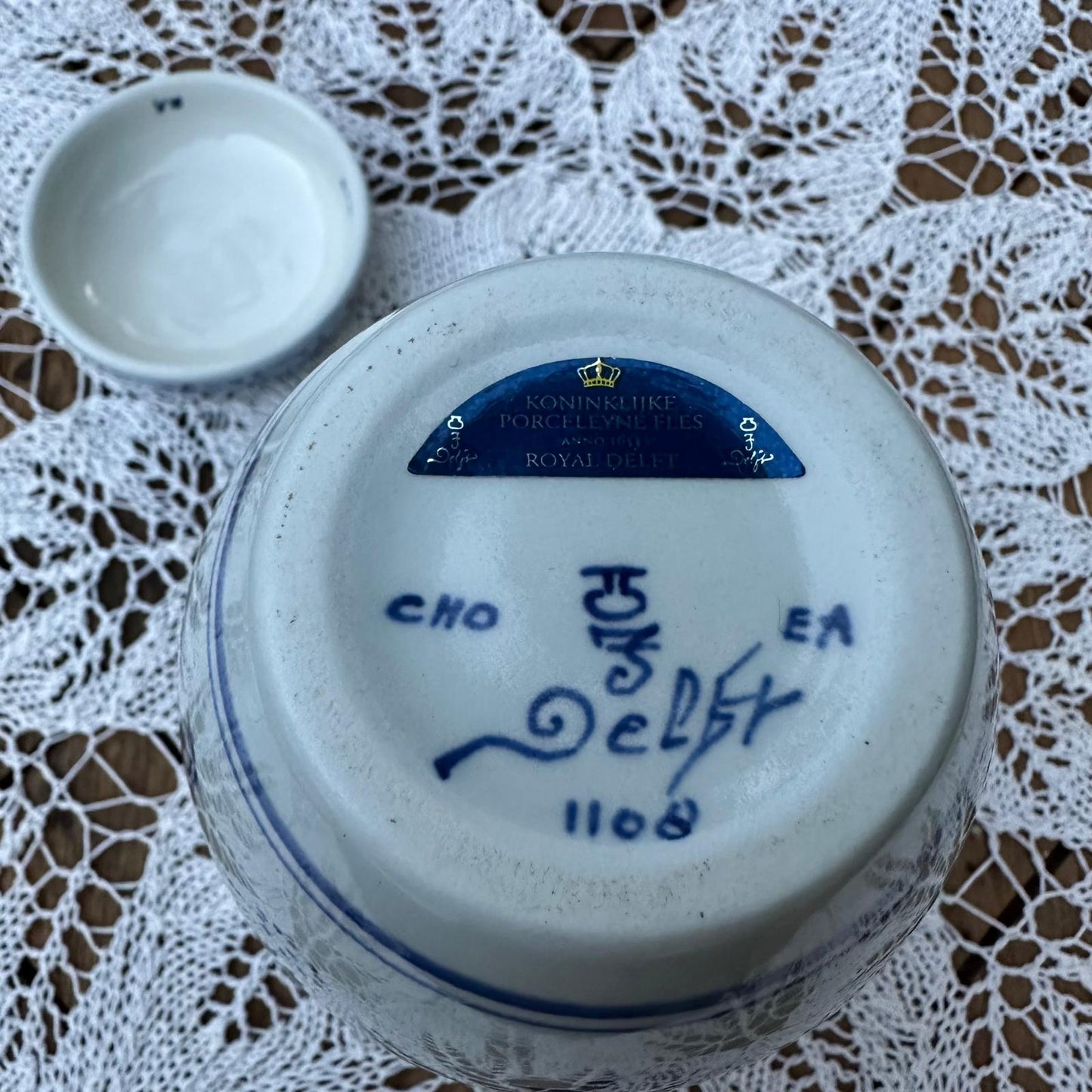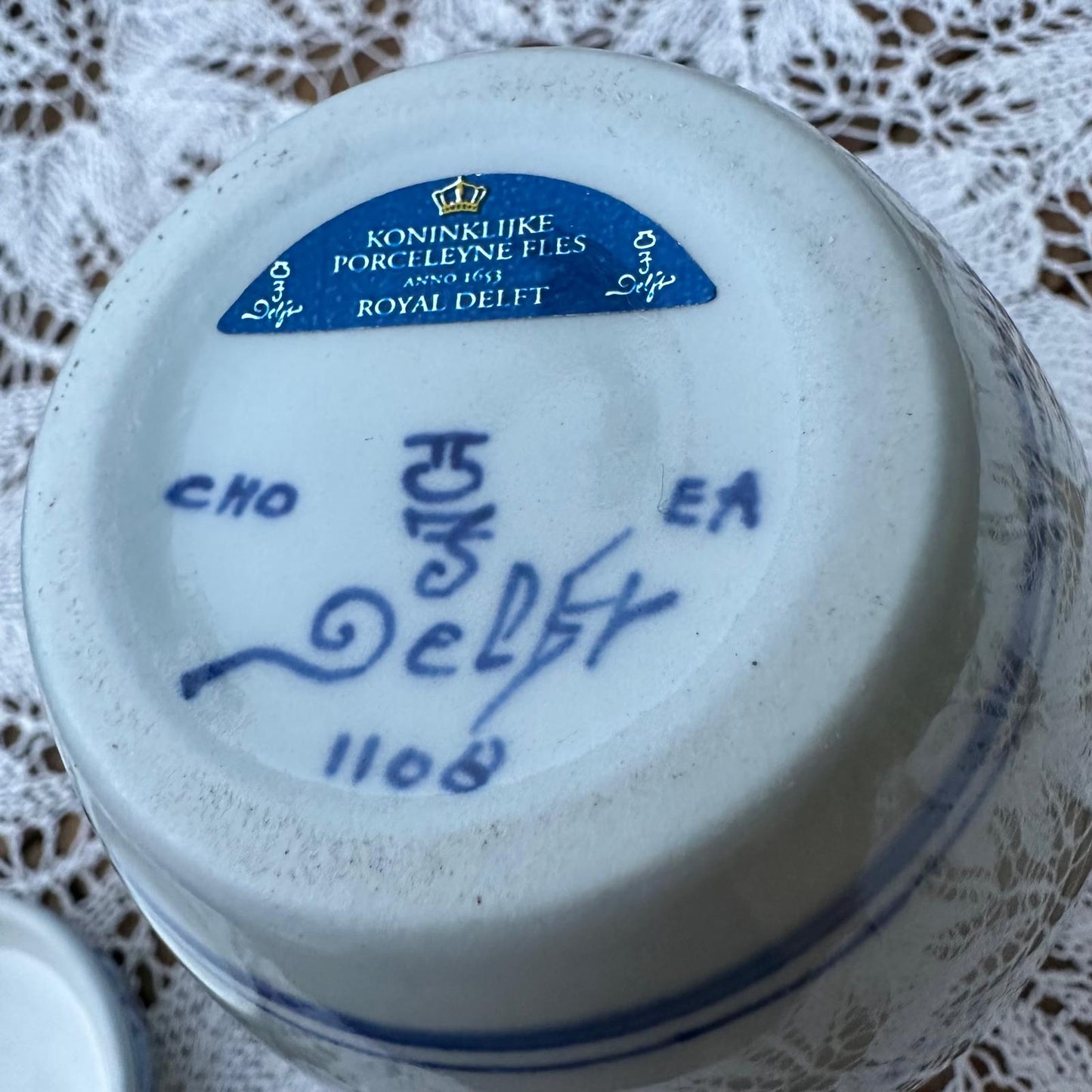Ceramic Pottery Lidded Jar with Floral Motifs – Royal Delft
Ceramic Pottery Lidded Jar with Floral Motifs – Royal Delft
Couldn't load pickup availability
Vintage white and blue ceramic pottery lidded jar by Royal Delft, crafted in 2006, is decorated with finely hand-painted floral motifs and framed borders. Designed in the iconic Delft blue style, this porcelain jar was painted by artist C. Hoffmann, who worked at Royal Delft from 1978 to 2010. Marked on the base with the maker’s hallmark, year code, and artist’s initials, it is in excellent condition and a collectible piece of Dutch Delftware.
Product details
- Overall dimensions: Height 4 1/4" (with lid 4 1/2") Diameter 3 1/2"
- Technique: Hand-painted Delftware porcelain
- Origin: Royal Delft, The Netherlands
- Date: 2006
- Signature: Marked on the base with Royal Delft maker’s mark, year code, and artist’s initials C. Hoffmann
- Condition: Excellent
Delft ceramics, also known as Delftware or Delft porcelain, is a type of hand-painted tin-glazed earthenware that has been produced since the 17th century in the Dutch city of Delft. Inspired by Chinese porcelain, it is characterized by a white tin glaze with decorations, most often in shades of blue (known as Delft Blue), depicting Dutch scenes, floral motifs, and biblical imagery. It was made in the form of plates, vases, tiles, and jugs. The most famous still-operating manufacturer is Royal Delft (De Porceleyne Fles). Delftware differs from true porcelain in its material (earthenware), hand-painted decoration, and often the presence of factory marks or date codes on the underside.
Founded in 1653 in Delft, the Royal Delft factory (Koninklijke Porceleyne Fles) is the last remaining original Delftware manufacturer from the 17th century still in operation today. Known for its exceptional craftsmanship and iconic blue-and-white earthenware, Royal Delft has supplied decorative pieces to royalty and collectors around the world for centuries. Each piece is carefully signed on the bottom — alongside the Royal Delft maker’s mark, the base typically includes a year code indicating the production date and the initials of the individual artist who painted the piece, adding historical and collectible value.
Between 1978 and 1993, C. Hoffman practiced his artistry at Royal Delft, the celebrated Dutch maker of traditional Delft Blue ceramics. Pieces bearing his personal initials reflect the workshop’s rich heritage during the late 20th century and are admired by collectors for their authenticity, quality, and finely detailed hand-painted artistry.
